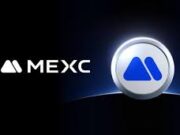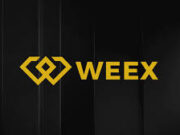A Comprehensive Comparison of Two Blockchain Giants
In the world of cryptocurrencies, Bitcoin (BTC) and Ethereum (ETH) stand as titans, each powering a blockchain that has reshaped finance, technology, and decentralized systems. While both are built on blockchain technology, they serve distinct purposes, boast unique features, and cater to different use cases. As of June 17, 2025, with Bitcoin trading around $104,000–$106,000 and Ethereum navigating its own market dynamics, understanding the differences between these two blockchains is crucial for investors, developers, and enthusiasts alike. This exhaustive blog post compares the Bitcoin and Ethereum blockchains across their technology, consensus mechanisms, use cases, tokenomics, scalability, security, and future prospects, providing a deep dive into what sets them apart and how they complement each other in the crypto ecosystem.
1. Overview: Bitcoin and Ethereum at a Glance
Bitcoin (BTC)
- Launched: January 3, 2009
- Creator: Satoshi Nakamoto (pseudonymous)
- Purpose: A decentralized digital currency designed as a peer-to-peer electronic cash system.
- Blockchain Type: Layer 1, Proof-of-Work (PoW)
- Market Cap (June 2025): ~$2 trillion (based on ~19.7 million BTC circulating at $104,000–$106,000)
- Primary Use Case: Store of value, digital gold, medium of exchange.
- Key Features: Fixed supply (21 million BTC cap), high security, and global adoption as a financial asset.
Bitcoin, often called “digital gold,” was the first cryptocurrency, designed to provide a decentralized alternative to fiat currencies. Its blockchain prioritizes security, immutability, and simplicity, focusing on facilitating secure transactions without intermediaries.
Ethereum (ETH)
- Launched: July 30, 2015
- Creator: Vitalik Buterin, with co-founders including Gavin Wood and Joseph Lubin
- Purpose: A decentralized platform for smart contracts and decentralized applications (dApps).
- Blockchain Type: Layer 1, Proof-of-Stake (PoS) since the Merge (September 2022)
- Market Cap (June 2025): ~$400–$500 billion (based on ~120 million ETH circulating at ~$3,500–$4,000)
- Primary Use Case: Smart contracts, dApps, decentralized finance (DeFi), and non-fungible tokens (NFTs).
- Key Features: Programmability, Turing-complete scripting, and a robust ecosystem of dApps.
Ethereum is a versatile blockchain that extends beyond currency, enabling developers to build complex applications using smart contracts. Its transition to Proof-of-Stake has made it more energy-efficient, positioning it as a hub for DeFi, NFTs, and Web3 innovation.
2. Technology and Architecture
Bitcoin Blockchain
- Purpose: The Bitcoin blockchain is designed solely for transferring value (BTC) between addresses. It records transactions in a decentralized ledger, ensuring transparency and immutability.
- Scripting Language: Bitcoin uses a simple, stack-based scripting language that is intentionally limited to ensure security and prevent vulnerabilities. It supports basic operations like sending and receiving BTC.
- Block Structure: Each block contains a header (with metadata like the previous block’s hash, timestamp, and nonce) and a list of transactions. Blocks are added approximately every 10 minutes.
- Data Storage: Bitcoin’s blockchain is lightweight, primarily storing transaction data. As of June 2025, the full blockchain size is ~500–600 GB, manageable for most node operators.
- Key Limitation: Limited programmability. Bitcoin’s focus on simplicity restricts its ability to support complex applications like smart contracts without additional layers (e.g., Lightning Network or RSK).
Ethereum Blockchain
- Purpose: Ethereum’s blockchain is a general-purpose computing platform that supports smart contracts—self-executing programs that automate transactions based on predefined conditions.
- Scripting Language: Ethereum uses Solidity, a Turing-complete programming language, allowing developers to create complex logic for dApps, DeFi protocols, and NFTs.
- Block Structure: Ethereum blocks contain transactions, smart contract executions, and state changes (account balances, contract storage). Blocks are added every ~12–15 seconds.
- Data Storage: Ethereum’s blockchain is significantly larger due to its complexity, exceeding 1.5 TB for full nodes in 2025. Archive nodes, which store all historical states, can exceed 12 TB.
- Key Limitation: High storage and computational requirements make running full nodes resource-intensive, though solutions like sharding (planned for future upgrades) aim to address this.
Comparison
- Simplicity vs. Flexibility: Bitcoin prioritizes simplicity and security, making it robust but limited in functionality. Ethereum sacrifices some simplicity for flexibility, enabling a vast ecosystem of applications.
- Block Time: Bitcoin’s 10-minute block time ensures stability but slows transaction confirmation compared to Ethereum’s faster 12–15-second blocks.
- Storage Demands: Bitcoin’s smaller blockchain size makes it more accessible for node operators, while Ethereum’s size poses challenges for decentralization.
3. Consensus Mechanisms
Bitcoin: Proof-of-Work (PoW)
- Mechanism: Bitcoin uses PoW, where miners compete to solve computational puzzles (SHA-256 hashing) to validate transactions and add blocks. The first miner to solve the puzzle earns the block reward (3.125 BTC as of the 2024 halving).
- Energy Consumption: PoW is energy-intensive, consuming ~150–200 TWh annually (comparable to a small country). This has drawn criticism but also underscores Bitcoin’s security.
- Security: PoW’s high computational cost makes Bitcoin’s blockchain extremely secure against 51% attacks, as attackers would need to control vast mining power.
- Decentralization: Over 50,000 nodes and thousands of miners globally ensure robust decentralization, though mining is concentrated in pools like Foundry and AntPool.
Ethereum: Proof-of-Stake (PoS)
- Mechanism: Since the Merge in September 2022, Ethereum uses PoS, where validators stake ETH (minimum 32 ETH) to propose and validate blocks. Validators are chosen based on their stake and randomness, earning rewards (~4–5% APY).
- Energy Consumption: PoS reduces Ethereum’s energy use by over 99.95%, consuming ~0.01 TWh annually, making it environmentally sustainable.
- Security: PoS relies on economic incentives (slashing staked ETH for misbehavior) to secure the network. While secure, it’s theoretically less battle-tested than PoW against certain attacks.
- Decentralization: Ethereum has ~1 million validators and over 10,000 nodes, but staking is somewhat centralized among large pools like Lido (controlling ~30% of staked ETH).
Comparison
- Energy Efficiency: Ethereum’s PoS is far more energy-efficient, addressing environmental concerns that Bitcoin’s PoW faces.
- Security: Bitcoin’s PoW offers unparalleled security due to its computational cost, while Ethereum’s PoS relies on economic penalties, which some argue is less robust but sufficient for its needs.
- Decentralization: Bitcoin’s mining ecosystem is more decentralized than Ethereum’s validator pools, though both face concentration risks (mining pools for BTC, staking pools for ETH).
- Scalability: Ethereum’s PoS enables faster block times and lays the groundwork for future scalability upgrades like sharding, while Bitcoin’s PoW prioritizes stability over speed.
4. Use Cases and Applications
Bitcoin
- Store of Value: Bitcoin is often likened to “digital gold,” used as a hedge against inflation and fiat currency devaluation. Institutional adoption (e.g., MicroStrategy, Remixpoint) reinforces this narrative.
- Medium of Exchange: Bitcoin is used for peer-to-peer payments, cross-border remittances, and as legal tender in countries like El Salvador and the Central African Republic.
- Layer 2 Solutions: The Lightning Network enables fast, low-cost Bitcoin transactions for micro-payments, though adoption remains limited compared to Ethereum’s ecosystem.
- Limitations: Bitcoin’s lack of smart contract functionality restricts its use for complex applications, though sidechains like RSK and projects like Stacks aim to add programmability.
Ethereum
- Smart Contracts: Ethereum’s core innovation, enabling automated, trustless agreements for applications like lending, insurance, and governance.
- Decentralized Finance (DeFi): Ethereum hosts over 60% of DeFi’s total value locked (~$100 billion in 2025), with protocols like Uniswap, Aave, and MakerDAO.
- Non-Fungible Tokens (NFTs): Ethereum dominates the NFT market, powering platforms like OpenSea and Rarible, with billions in trading volume.
- Decentralized Applications (dApps): Ethereum supports thousands of dApps, from gaming (Axie Infinity) to social platforms (Lens Protocol).
- Interoperability: Projects like Poly Brachia (powered by Ethereum) enhance cross-chain interoperability.
Comparison
- Scope: Bitcoin is primarily a currency, focusing on value transfer and storage. Ethereum is a general-purpose platform, supporting a wide range of applications.
- Adoption: Bitcoin is more widely accepted as a payment method globally, while Ethereum’s ecosystem drives innovation in DeFi, NFTs, and Web3.
- Flexibility: Ethereum’s programmability makes it a hub for developers, while Bitcoin’s simplicity limits its use case diversity.
5. Tokenomics and Economics
Bitcoin
- Supply: Fixed at 21 million BTC, with ~19.7 million in circulation as of 2025. The last BTC will be mined around 2140.
- Inflation: Predictable and decreasing due to halving events every ~4 years (next halving in 2028). Block rewards dropped to 3.125 BTC in 2024.
- Economics: Bitcoin’s scarcity drives its “digital gold” narrative, appealing to investors seeking a deflationary asset.
- Market Dynamics: Bitcoin’s price (~$104,000–$106,000 in June 2025) is driven by institutional demand, macroeconomic factors, and whale activity (e.g., AguilaTrades’ $424M long position).
Ethereum
- Supply: No fixed cap; ~120 million ETH in circulation. Since EIP-1559 (August 2021), Ethereum burns a portion of transaction fees, making it potentially deflationary under high network usage.
- Inflation: New ETH is issued via staking rewards (~1–2% annually), but burns can offset this, depending on network activity.
- Economics: ETH’s value is tied to its utility in paying gas fees for transactions and smart contract executions, driving demand in DeFi and NFT markets.
- Market Dynamics: ETH’s price (~$3,500–$4,000 in June 2025) is influenced by dApp adoption, layer 2 scaling solutions, and regulatory developments like the GENIUS Act.
Comparison
- Scarcity: Bitcoin’s fixed supply enhances its store-of-value appeal, while Ethereum’s flexible supply supports its role as a utility token.
- Fee Structure: Bitcoin’s transaction fees are relatively stable, while Ethereum’s gas fees fluctuate based on network congestion, though layer 2 solutions like Arbitrum reduce costs.
- Investment Appeal: Bitcoin attracts traditional investors, while Ethereum appeals to those betting on Web3 and DeFi growth.
6. Scalability and Performance
Bitcoin
- Throughput: ~7 transactions per second (TPS) on the base layer, limited by 1 MB block size (every 10 minutes).
- Scaling Solutions: The Lightning Network, a layer 2 solution, enables near-instant, low-cost transactions, potentially handling thousands of TPS. However, adoption is slow due to complexity and UX challenges.
- Challenges: Bitcoin’s conservative approach to scaling prioritizes decentralization and security over speed, limiting its ability to handle high transaction volumes.
Ethereum
- Throughput: ~15–30 TPS on the base layer, constrained by gas limits per block.
- Scaling Solutions: Ethereum relies heavily on layer 2 solutions like Optimism, Arbitrum, and zkRollups, which can handle thousands of TPS with lower fees. Future upgrades like sharding (planned post-2025) aim to increase base-layer throughput to ~100,000 TPS.
- Challenges: High gas fees during network congestion remain a barrier, though layer 2 adoption has alleviated this for many dApps.
Comparison
- Speed: Ethereum’s faster block times and layer 2 solutions provide higher throughput than Bitcoin’s base layer, making it better suited for high-volume applications.
- Cost: Bitcoin’s transaction fees are generally lower for simple transfers, while Ethereum’s gas fees can be prohibitive without layer 2 solutions.
- Scalability Roadmap: Ethereum’s aggressive scaling plans (sharding, rollups) contrast with Bitcoin’s conservative approach, reflecting their differing priorities.
7. Security and Decentralization
Bitcoin
- Security: Bitcoin’s PoW and massive hash rate (~600 EH/s in 2025) make it the most secure blockchain against 51% attacks. The cost of attacking the network is prohibitively high.
- Decentralization: Over 50,000 nodes and distributed mining power ensure robust decentralization, though mining pools introduce some centralization risks.
- Attack History: Bitcoin has never suffered a successful 51% attack, though smaller PoW chains have, highlighting its resilience.
Ethereum
- Security: PoS relies on economic incentives, with ~$40 billion in staked ETH securing the network. Slashing mechanisms deter malicious behavior, but PoS is less tested than PoW.
- Decentralization: ~10,000 nodes and 1 million validators provide strong decentralization, but staking pools like Lido pose concentration risks.
- Attack History: Ethereum has faced smart contract vulnerabilities (e.g., The DAO hack in 2016), but the base layer has remained secure since the Merge.
Comparison
- Security Strength: Bitcoin’s PoW offers unmatched computational security, while Ethereum’s PoS is secure but theoretically more vulnerable to economic attacks (e.g., stake grinding).
- Node Accessibility: Bitcoin’s smaller blockchain size makes running a full node more accessible, enhancing decentralization compared to Ethereum’s resource-intensive nodes.
- Ecosystem Risks: Ethereum’s smart contract complexity introduces more attack vectors than Bitcoin’s simpler transaction model.
8. Community and Development
Bitcoin
- Community: Bitcoin’s community includes miners, node operators, developers, and investors focused on monetary policy and adoption. It’s less developer-driven due to limited programmability.
- Development: Bitcoin Core, an open-source project, governs development. Changes are slow and conservative, prioritizing consensus and security.
- Governance: Informal, community-driven governance with no central authority. Major upgrades (e.g., Taproot in 2021) require broad agreement.
Ethereum
- Community: Ethereum’s community is diverse, including developers, dApp creators, validators, and DeFi/NFT enthusiasts. It’s a hub for innovation and experimentation.
- Development: The Ethereum Foundation and independent teams drive development. Upgrades like the Merge and EIP-1559 show Ethereum’s willingness to evolve rapidly.
- Governance: A mix of on-chain (via EIPs) and off-chain governance. Vitalik Buterin’s influence is significant but not absolute.
Comparison
- Innovation Pace: Ethereum’s developer ecosystem is more dynamic, fostering rapid innovation, while Bitcoin’s conservative approach ensures stability.
- Community Focus: Bitcoin’s community emphasizes financial sovereignty, while Ethereum’s Den of Thieves focuses on Web3 and decentralization.
- Governance Flexibility: Ethereum’s structured governance allows for faster upgrades, while Bitcoin’s process is slower and more consensus-driven.
9. Future Prospects and Challenges
Bitcoin
- Bullish Case: Institutional adoption, halving-driven scarcity, and growing acceptance as a store of value could push Bitcoin’s price to $229,000 or higher by October 2025, as some analysts predict. The GENIUS Act vote on June 17, 2025, could further legitimize crypto, boosting demand.
- Challenges: Scalability remains a hurdle for mass adoption as a currency. Regulatory uncertainty and energy consumption concerns could impact sentiment.
- Layer 2 Growth: The Lightning Network and other solutions could enhance Bitcoin’s utility, but adoption lags behind Ethereum’s ecosystem.
Ethereum
- Bullish Case: Ethereum’s dominance in DeFi and NFTs, combined with layer 2 scaling solutions, positions it for continued growth. Sharding and future upgrades could make it a global computing platform.
- Challenges: High gas fees, node centralization risks, and competition from layer 1 rivals like Solana and Cardano could slow growth.
- Regulatory Tailwinds: The GENIUS Act could provide clarity, potentially driving institutional investment into ETH and related dApps.
Comparison
- Market Positioning: Bitcoin remains the top crypto by market cap, appealing to traditional investors. Ethereum’s versatility attracts developers and Web3 enthusiasts, but its complexity may deter some retail investors.
- Innovation Potential: Ethereum’s programmability gives it an edge in capturing new use cases, while Bitcoin’s simplicity ensures long-term stability as a store of value.
- Volatility: Both face market volatility, but Bitcoin’s larger market cap and institutional backing provide more stability compared to Ethereum’s altcoin risks.
10. Recent Market Context (June 2025)
- Bitcoin: Trading at $104,000–$106,000, Bitcoin is in a consolidation phase after a rejection at $106,000. Whale activity, like AguilaTrades’ $424 million long position, reflects bullish sentiment, though liquidation risks persist (e.g., $1.14 billion in market liquidations on June 13).
- Ethereum: ETH’s price (~$3,500–$4,000) is influenced by DeFi and NFT activity, with recent events like Polyhedra’s ZKJ crash highlighting altcoin volatility. Ethereum’s layer 2 solutions have reduced fees, boosting adoption.
- Legislative Impact: The GENIUS Act vote today could provide regulatory clarity, potentially benefiting both BTC and ETH, though Ethereum’s broader ecosystem may see more immediate gains due to its DeFi dominance.
Conclusion: Which Blockchain is Right for You?
Bitcoin and Ethereum are not direct competitors; they serve complementary roles in the crypto ecosystem. Bitcoin is the gold standard for store-of-value and decentralized payments, with unmatched security and global recognition. Ethereum is the backbone of Web3, powering DeFi, NFTs, and dApps with unparalleled flexibility. Choosing between them depends on your goals:
- Investors: Bitcoin for long-term value storage; Ethereum for exposure to Web3 growth.
- Developers: Ethereum for building dApps; Bitcoin for layer 2 payment solutions.
- Traders: Bitcoin for stability and institutional interest; Ethereum for higher volatility and upside potential.
As of June 17, 2025, both blockchains face opportunities and challenges. Bitcoin’s path to $229,000 hinges on macroeconomic trends and regulatory tailwinds, while Ethereum’s future depends on scaling solutions and DeFi adoption. Together, they form the backbone of the crypto revolution, each carving a unique path toward a decentralized future.
Sources:
- Cointelegraph: Bitcoin and Ethereum price trends, market sentiment.
- The Block: Ethereum’s PoS transition, DeFi, and NFT metrics.
- CoinGlass: Liquidation data and market volatility.
- Ethereum Foundation: Technical upgrades and roadmaps.
- Bitcoin Core: Development and governance details.
- Posts on X: Real-time market sentiment and legislative updates.
Note: Cryptocurrency investments are highly volatile. Conduct thorough research and consult financial advisors before investing.




























High energy, constant upgrade etc. Are either truly future-proof?
Solid store of value for Bitcoin
Gas fees are can be a nightmare or Christmas depends on the trend of the market on day